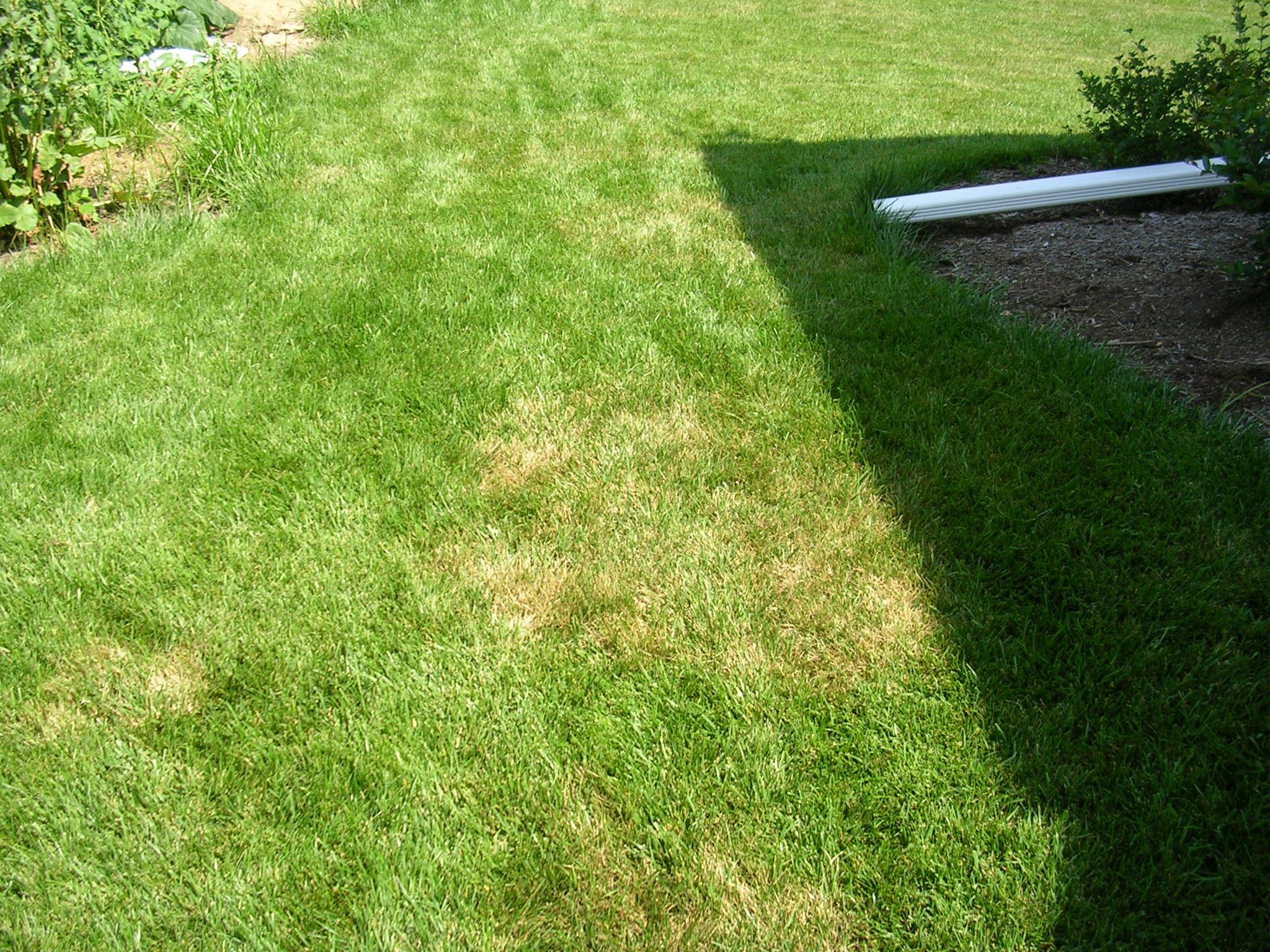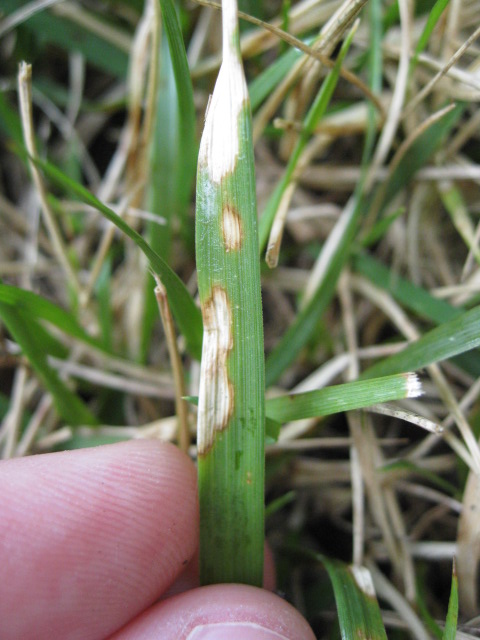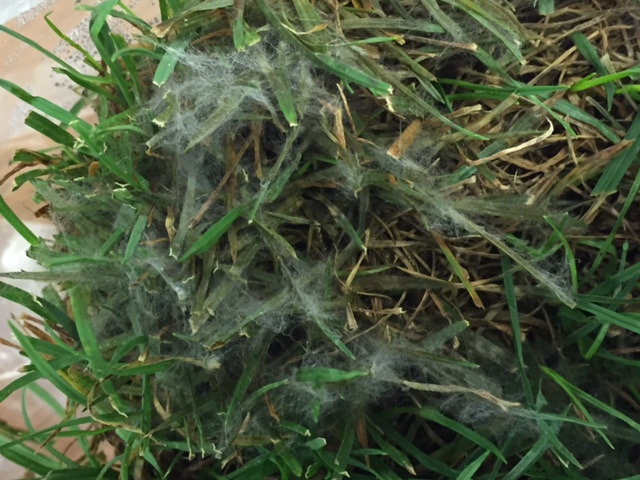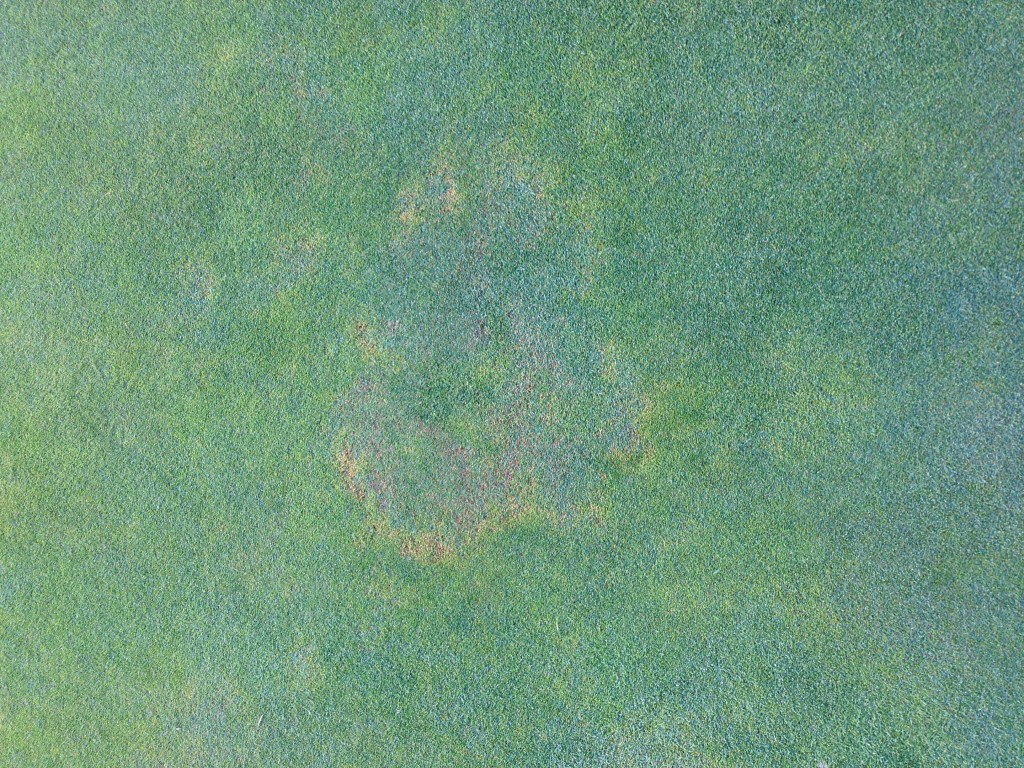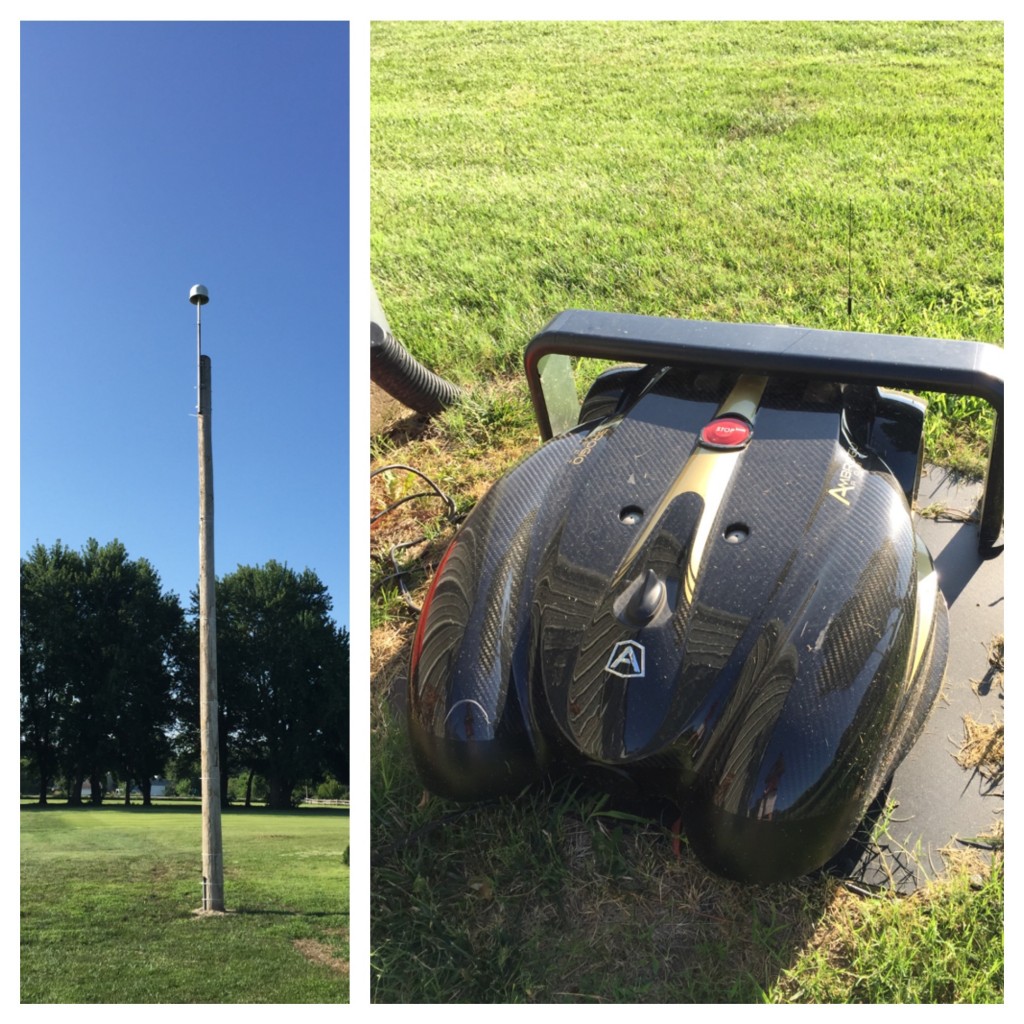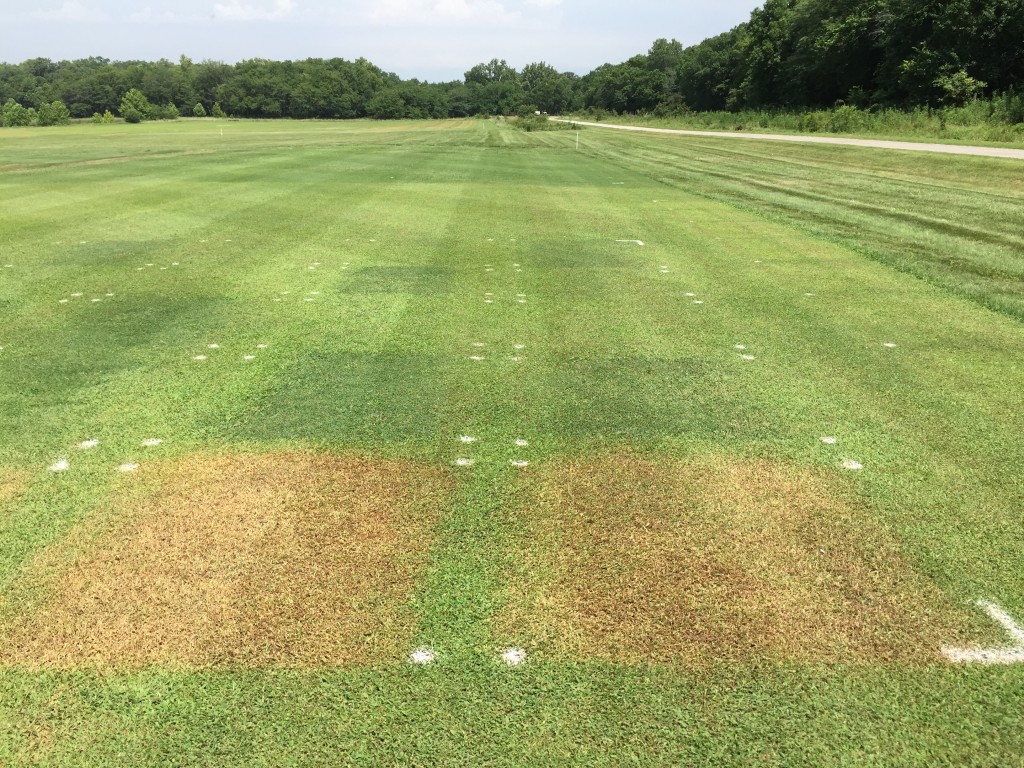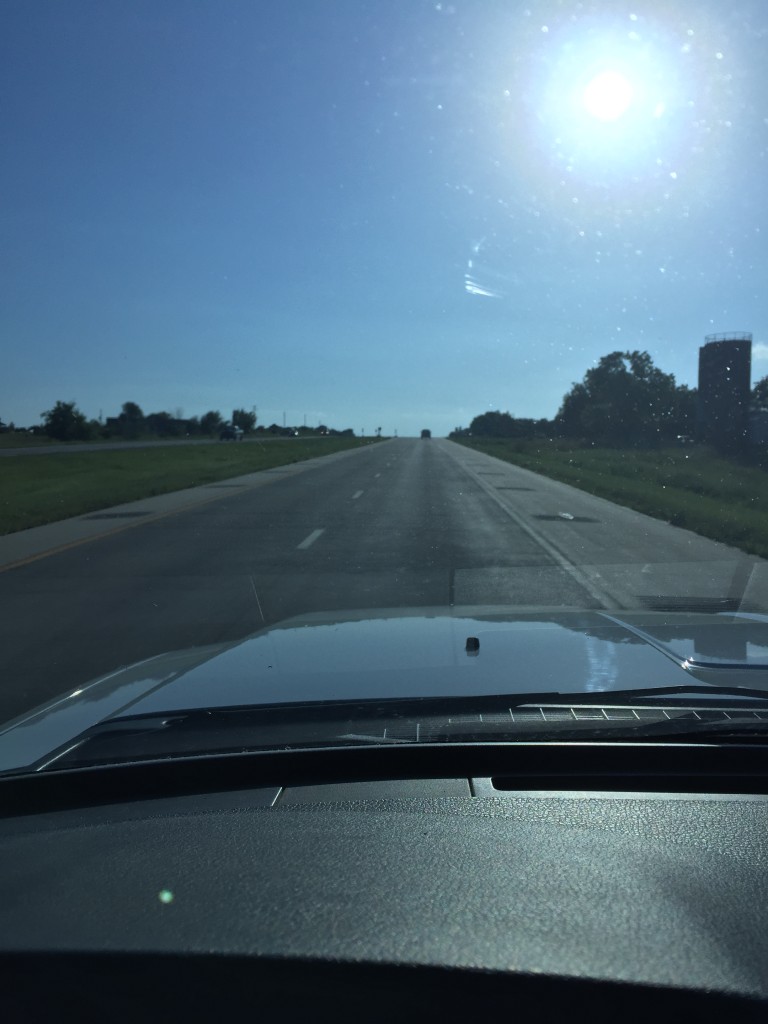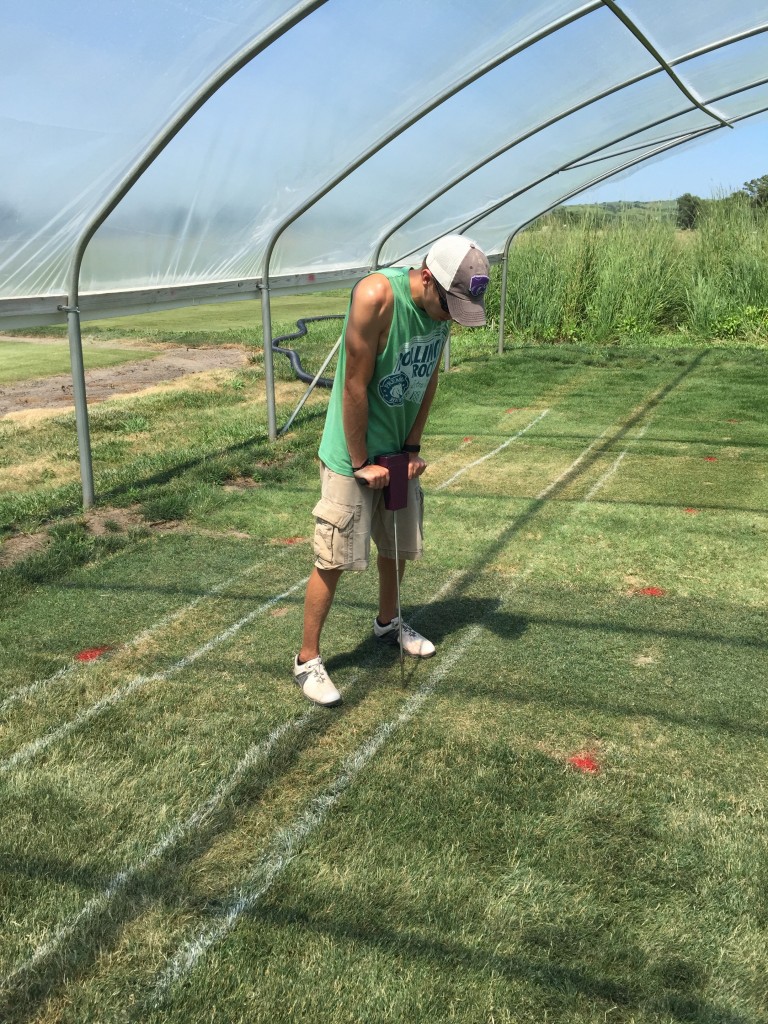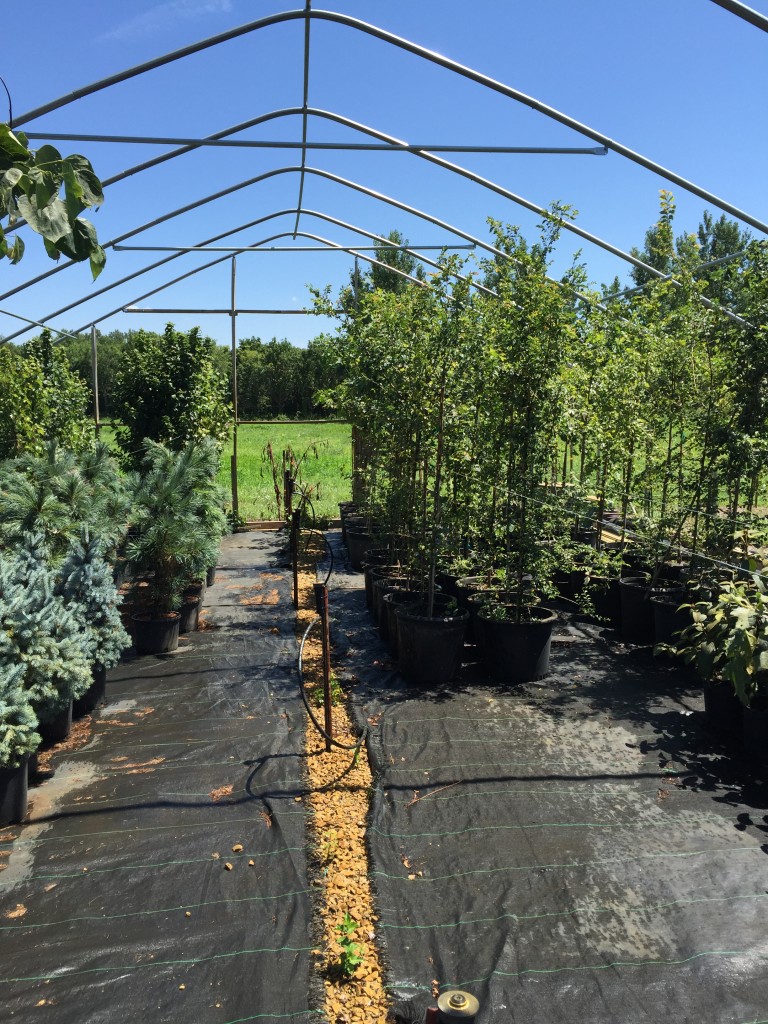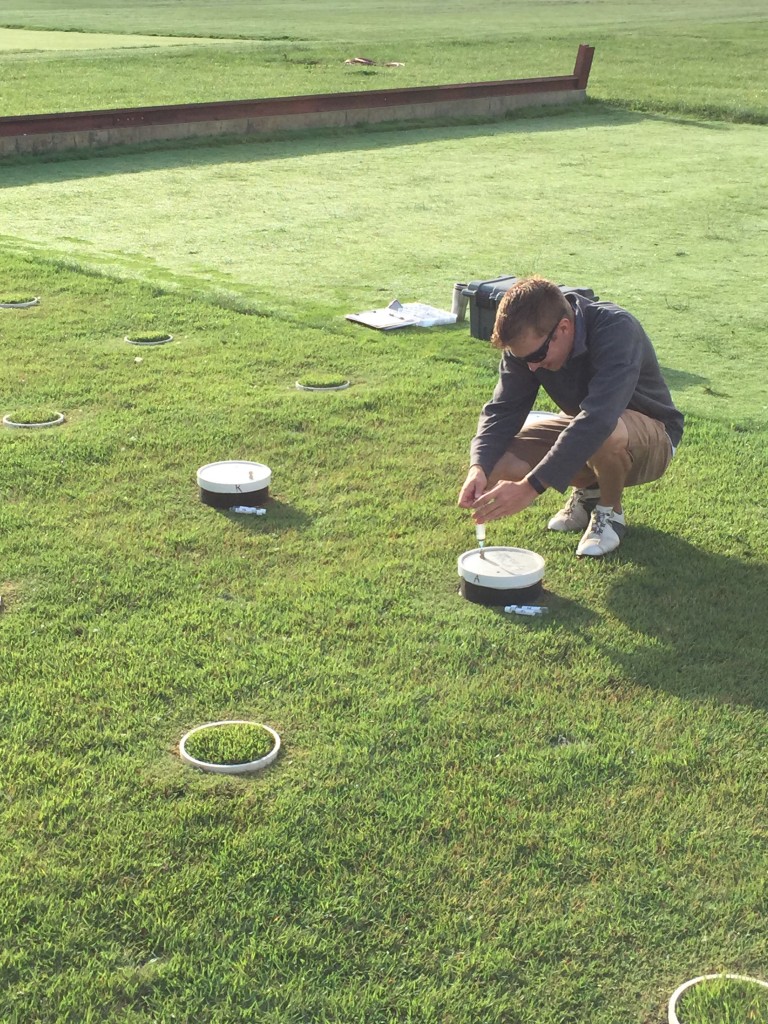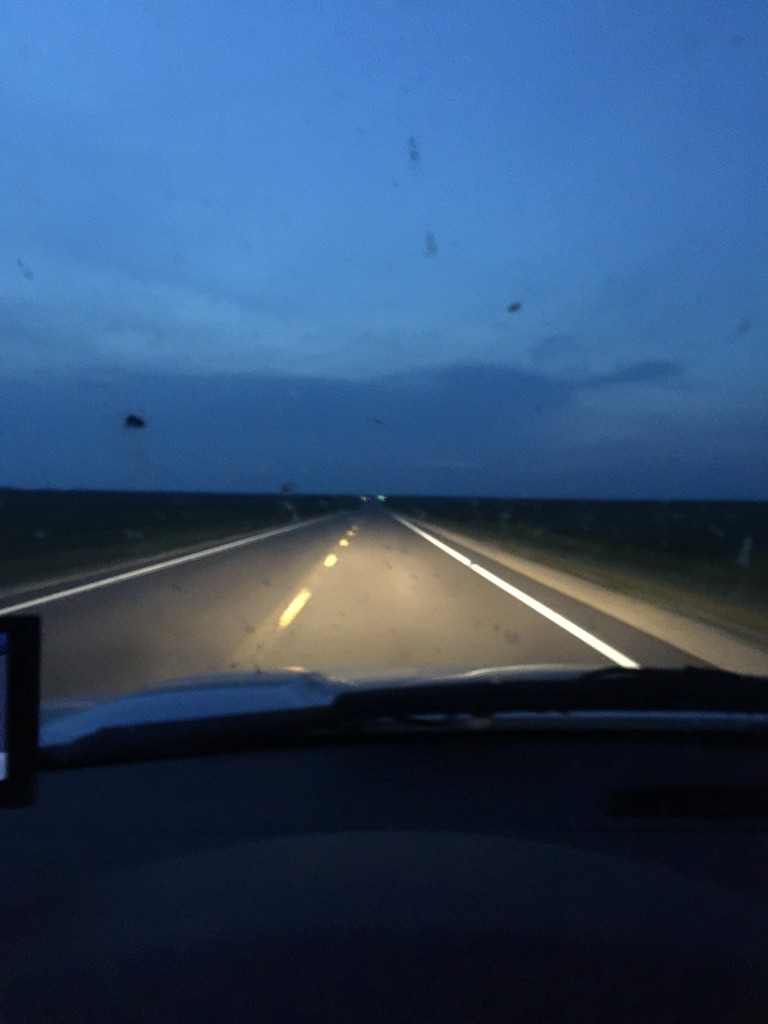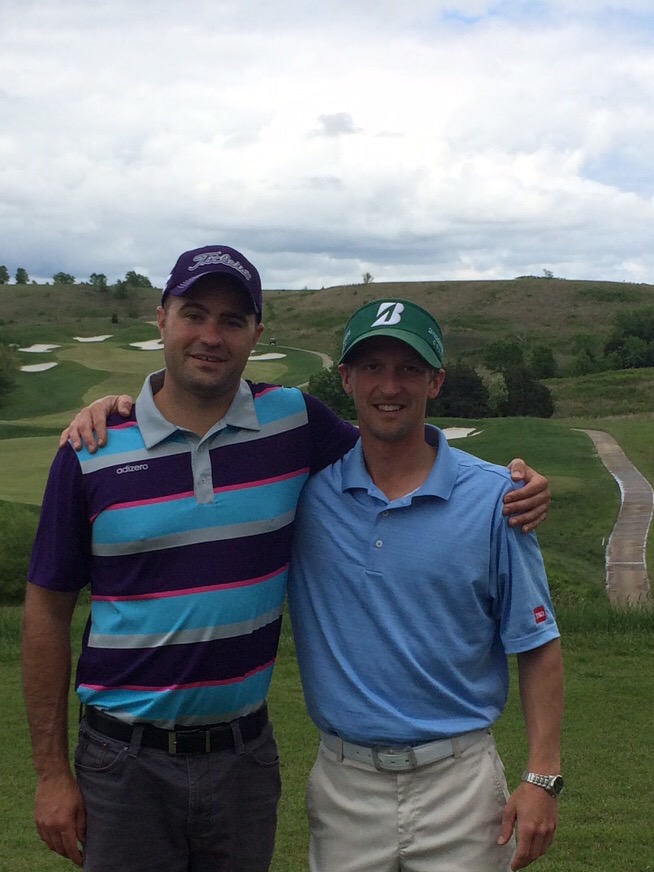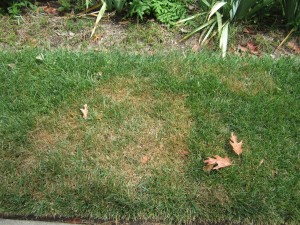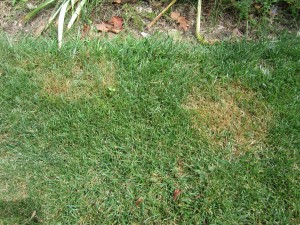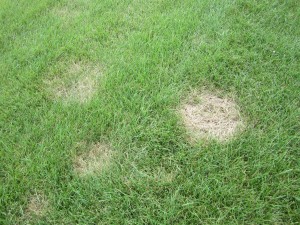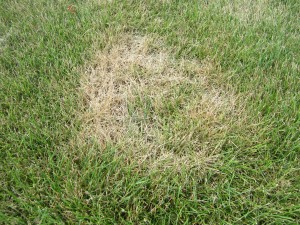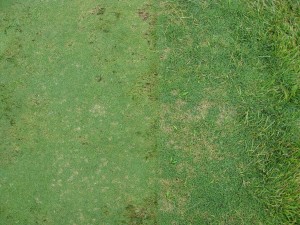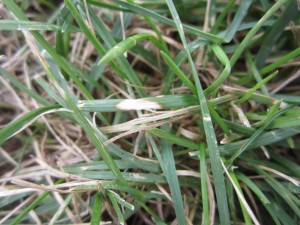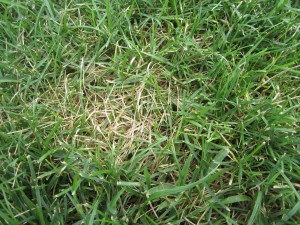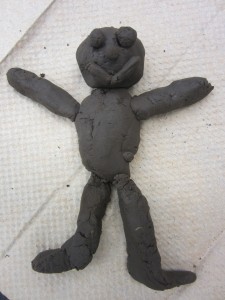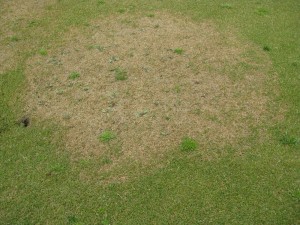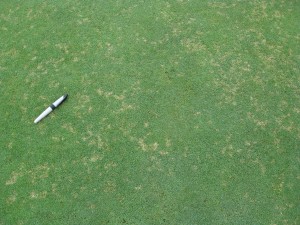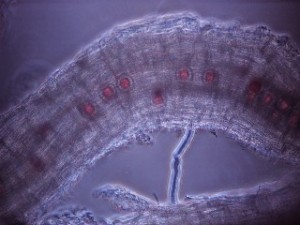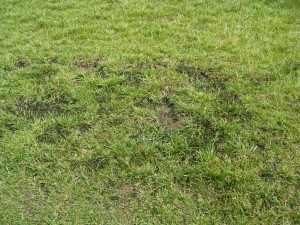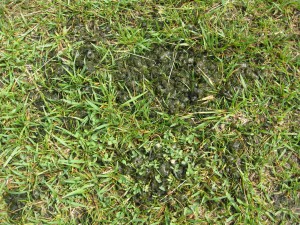(By Jared Hoyle, Evan Alderman and Jake Reeves; KSU Turfgrass Research and Extension)
Megan posted last week about brown patch already showing up at Rocky Ford Turfgrass Research Center in Manhattan, KS. So I wanted to share a little bit of research we conducted last year in Olathe about brown patch control. This way you know what to have ready to go when you need to make your brown patch application.
Rationale. Tall fescue [Festuca arundinacea Schreb.] is one of the most predominantly used cool-season turfgrass species in the transition zone. Its deep root system and coarse textured leafs lend to its ability to withstand drought, heat, and wear stress. Although it is well adapted to survive the summer months in Kansas, it can be susceptible to injury from disease. Brown patch [Rhizoctonia solani] is a disease that can damage leaf tissue, shoots, and the crown of tall fescue during the summer months. This disease is most prevalent during periods of high humidity, high temperature (above 80°F), and high nitrogen levels. During the mornings mycelia can be seen forming a “smoke ring” around the affected area. Applications of preventative fungicides have proven to be a successful management strategy in reducing the occurrence of brown patch incidences in tall fescue stands. With new fungicide formulations coming out every year, testing is needed to demonstrate the efficacy of these fungicides in reducing potential injury from disease.
Objectives. Evaluate Heritage Action and Velista for preventative control of brown patch in a perennial stand of tall fescue.
Study Description. A field study was initiated 18 June 2015 at the Kansas State University Olathe Horticultural Research Center in Olathe, KS on turf-type tall fescue maintained at 3 inch. Study was conducted as a randomized complete-block design, with three replications. Fungicides applied during this study were Heritage Action (Azoxystobin and Acibenzolar-S-methyl) and Velista (Penthiopyrad). Field study consisted of: an untreated control, Velista applied at 0.3 and 0.5 oz/1,000ft2, and Heritage Action applied at 0.2 oz/1,000ft2. Visual percent brown patch incidence was rated on a 0 to 100% scale every three weeks beginning at trial initiation. Means were separated according to Fisher’s Protected LSD test when P ≤ 0.05.
| Table 1. Percent brown patch incidence on tall fescue with the application of preventative fungicides. |
|
% Brown Patch Incidence† |
| Treatment |
0 WAT‡ |
3 WAT |
6 WAT |
9 WAT |
| Control |
0 |
0 |
43.3 a§ |
13.7 |
| Velista 0.3 oz/1,000ft2 |
0 |
0 |
5.0 b |
14.3 |
| Velista 0.5 oz/1,000ft2 |
0 |
0 |
6.7 b |
5.3 |
| Heritage Action 0.2 oz/1,000ft2 |
0 |
0 |
0.0 b |
0.3 |
| † Percent brown patch incidence was visually rated on a 0-100% scale where 0% = no brown patch observed and 100% = plot completely affected by brown patch. |
| ‡ Indicates weeks after treatment application. |
| § Means in a column followed by the same letter are not significantly different according to Fisher’s protected LSD test, (P<0.05). |
Results. All applications of the preventative fungicides resulted in minimal observations of brown patch. Six weeks after treatment application (WAT) Velista applied at 0.3 oz/1,000ft2 and 0.5 oz/1,000ft2 and Heritage Action resulted in 5%, 7%, and 0% brown patch incidence, respectively, when compared to an untreated control (43% brown patch incidence)(Table 1). Heritage Action performed best during this study with brown patch only being observed 9 WAT (0.3%). From this research, to decrease the chances of a brown patch incidence, apply a preventative fungicide before conditions are favorable for this disease. Repeat applications may be needed to ensure seasonal coverage.

Figure 1. Digital images of research plots 9 WAT, see Table 1 for the mean percent brown patch cover for each corresponding treatment.

